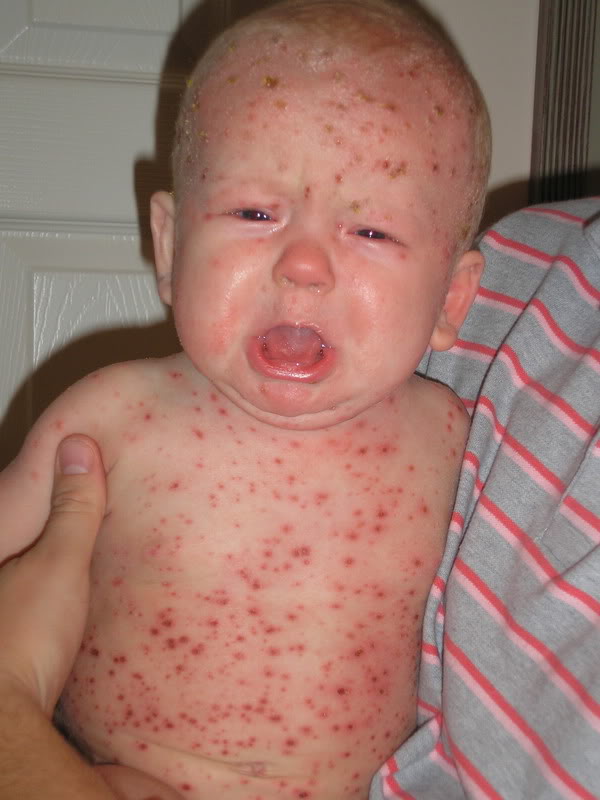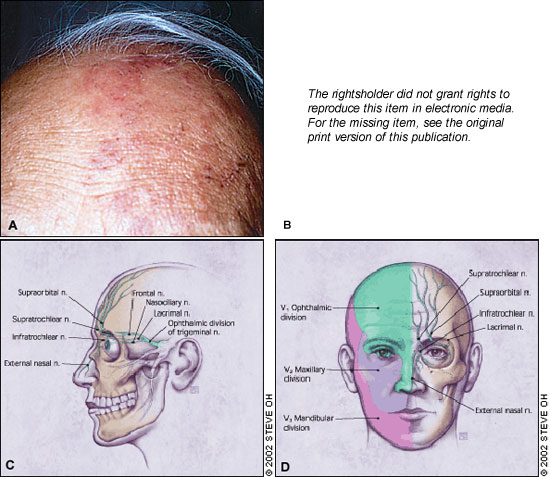-
Herpes zoster or Shingles
is a viral disease characterized by a painful skin rash with blisters in a limited area on one side of the body (left or right), often in a stripe. The initial infection with varicella zoster virus (VZV) causes the acute, short-lived illness chickenpox which generally occurs in children and young adults. Once resolved, the virus is not eliminated from the body, but remains dormant in the root ganglion cell.

Exactly how the virus remains latent in the body, and subsequently re-activates, is not understood.
The earliest symptoms of herpes zoster , which include headache, fever, and malaise, are nonspecific, and may result in an incorrect diagnosis. These symptoms are commonly followed by sensations of burning pain, itching, hyperesthesia (oversensitivity), or paresthesia (“pins and needles”: tingling, pricking, or numbness). The pain may be mild to extreme in the affected dermatome, with sensations that are often described as stinging, tingling, aching, numbing or throbbing, and can be interspersed with quick stabs of agonizing pain.
Herpes zoster may have additional symptoms, depending on the dermatome involved. Herpes zoster ophthalmicus involves the orbit of the eye and occurs in approximately 10% to 25% of cases. It is caused by the virus reactivating in the ophthalmic division of the trigeminal nerve. Generally involves the tip of the nose Hutchinson Sign

Herpes zoster oticus, also known as Ramsay Hunt syndrome type II, involves the ear. It is thought to result from the virus spreading from the facial nerve to the vestibulocochlear nerve. Symptoms include hearing loss and vertigo (rotational dizziness).
More on Treatment and Managing HZV



